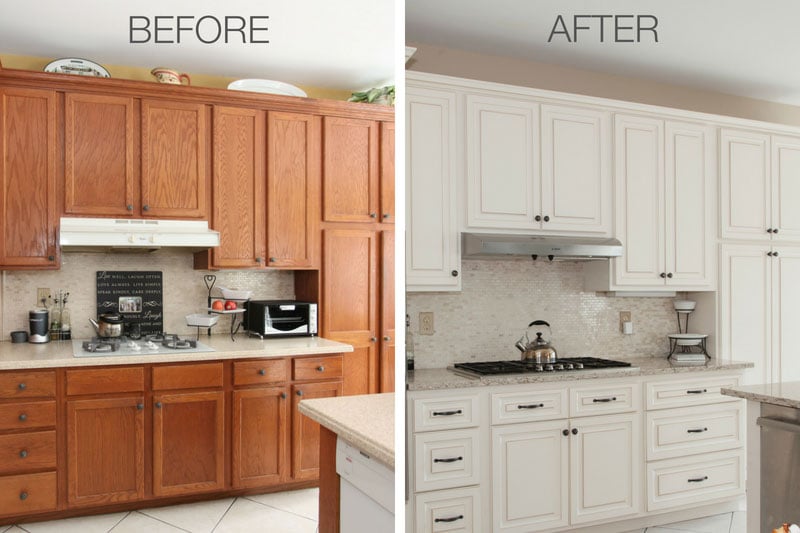Renew the Kitchen: An Art of Cupboard Refinishing
In the realm of transforming your kitchen, few undertakings can make as significant an impact as refinishing your cabinets. Over time, cabinets can become faded, marked, or old-fashioned, but rather than considering a complete renovation, you can breathe new life into your existing cabinetry with some careful refinishing. This approach not only saves costs but also allows you to maintain the character of your kitchen while achieving a fresh, updated look.
The art of kitchen cabinet refinishing is about not only applying a new layer of stain or stain. It’s a journey that involves planning, skill, and a bit of creativity. By choosing the right techniques and materials, you can create a beautiful finish that enhances your kitchen’s style and functionality. Whether you prefer a modern vibe with bright whites or a warm, rustic feel with rich wood tones, refinishing your cabinets offers countless options to express your personal style and elevate your culinary space.
Understanding Cupboard Refinishing
Cabinetry restoration is a innovative procedure that renews the appearance of your cooking space without the need for a full renovation. It entails stripping away old finishes, fixing any damage, and coating with new stains or paints to give cabinets a new look. This technique not only improves the visual allure of your kitchen but can also prolong the durability of your cabinetry, making it an effective and budget-friendly alternative to replacement.
One of the key perks of kitchen cabinet refinishing is the variety of possibilities available. Homeowners can choose from a selection of finishes, including environmentally friendly paints and stains that showcase the wood’s natural beauty. Additionally, refinishing allows for customization; whether you want a shiny look or a matte finish, you can achieve the look that fits your taste and cooking space design.
Before embarking on the refinishing process, it is essential to examine the status of your cabinets. Small scratches and dents can often be repaired with wood filler, while more extensive damage may require deeper attention or even segmental replacement. Understanding the current state of your cabinetry will aid determine the optimal approach for refinishing, ensuring that the results are both beautiful and enduring.
Crucial Equipment and Materials

To effectively tackle a kitchen cabinet revamping project, having the right tools and materials is crucial. Start with a high-quality painter's tape to protect areas that need to not be painted. A proper primer designed for cabinets will ensure better adhesion and durability. Additionally, invest in a high-quality paint or stain appropriate for your cabinet material. Using brushes and rollers that are particularly made for smooth finishes will also provide a polished look to your refinished cabinets.
Next, don’t forget to get some necessary prep tools. Sandpaper or sanding blocks in various grits will help you achieve a flat surface by removing old finishes and imperfections. A power sander can make the job quicker, while foam brushes are perfect for applying paint or stain in tight spaces and crevices. Make sure to have a drop cloth or old newspapers to protect your work area from drips and spills during the refinishing process.
Lastly, safety gear is essential while working with paints and solvents. Having a respirator mask will protect you from fumes and dust, while safety glasses will shield your eyes. diamondsprayfinish.com will keep your hands clean and prevent any irritation from chemicals. With these tools and materials in hand, you will be well-prepared to embark on your kitchen cabinet refinishing journey.
Step-by-Step Refinishing Process
The primary step in the kitchen cabinet refinishing process is to remove all cabinet panels, containers, and hardware. This allows for simpler entry to all surfaces and avoids harm during the refinishing. Thoroughly wash each item with a degreaser to eliminate any oil or dirt that has built up over time. Once everything is tidy, check for any damages or imperfections that may require repairs before proceeding.
After that, you'll need to sand down the areas of the cabinets. Use a coarse sandpaper to begin and move on to finer-grit for a polished finish. The goal is to remove the old finish and create a rough surface for the fresh paint or stain to adhere to. After sanding, ensure to clean down all areas with a damp cloth to remove dust and debris, as this will impact the final appearance of your refinished cabinets.
In the end, put on the chosen finish—be it paint, stain, or sealant. If painting, use a high-quality paintbrush or a sprayer for an uniform application. For stains, apply with a cloth and wipe off excess to get the desired color. Allow adequate drying time between coats and think about putting on at least two coats for best coverage and durability. Once everything is fully dry, reattach the fittings, panels, and drawers, and step back to appreciate your stunningly revived kitchen.